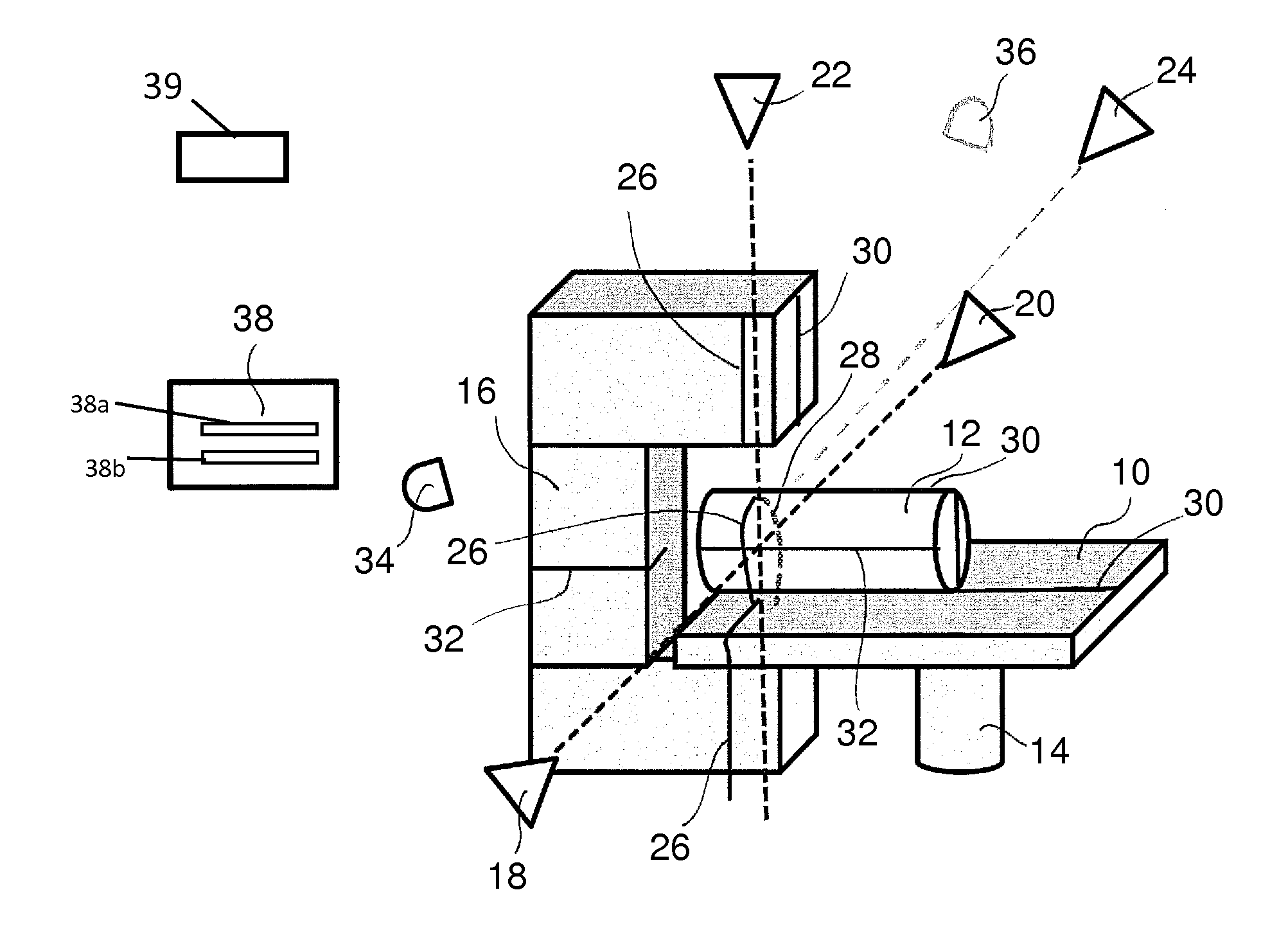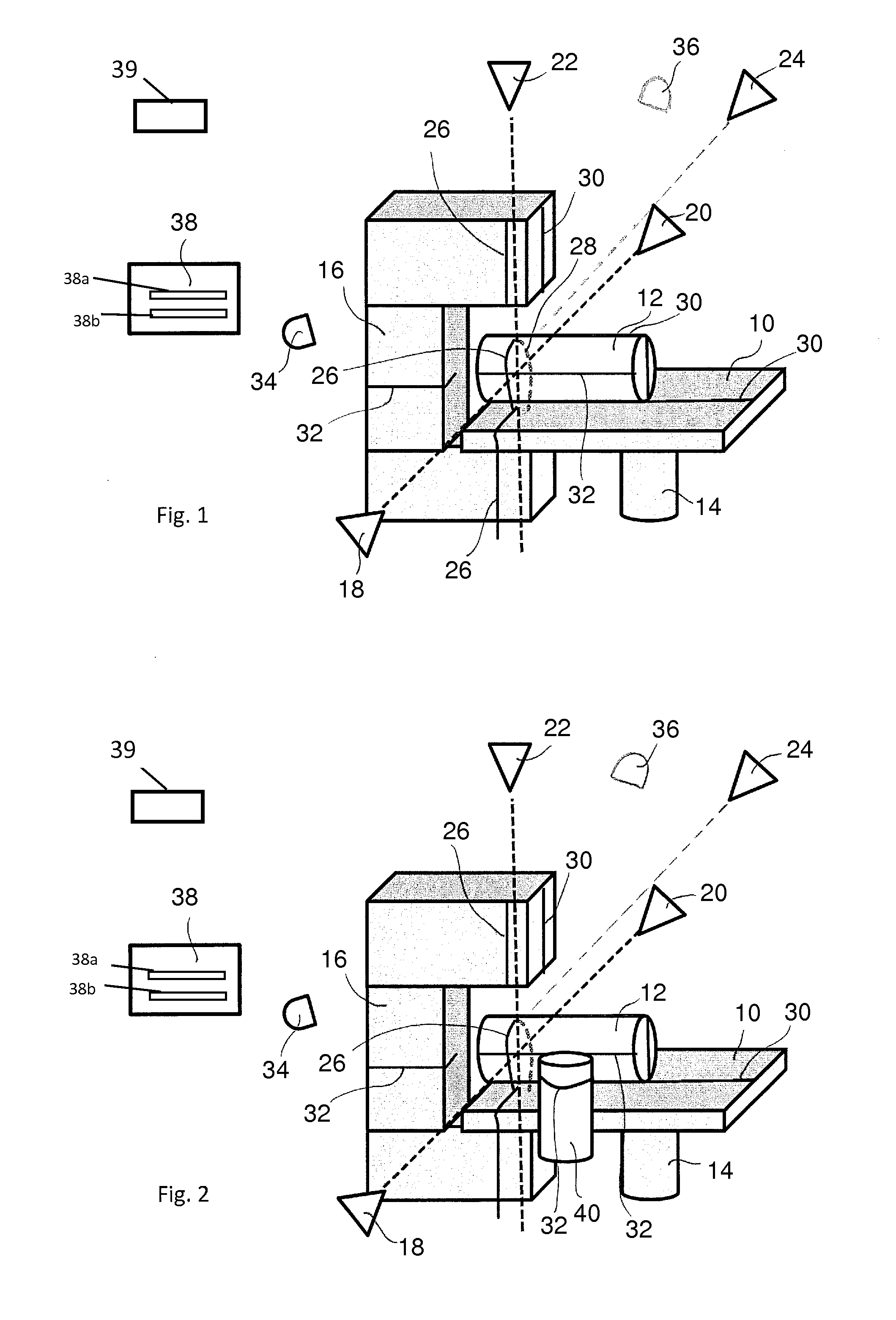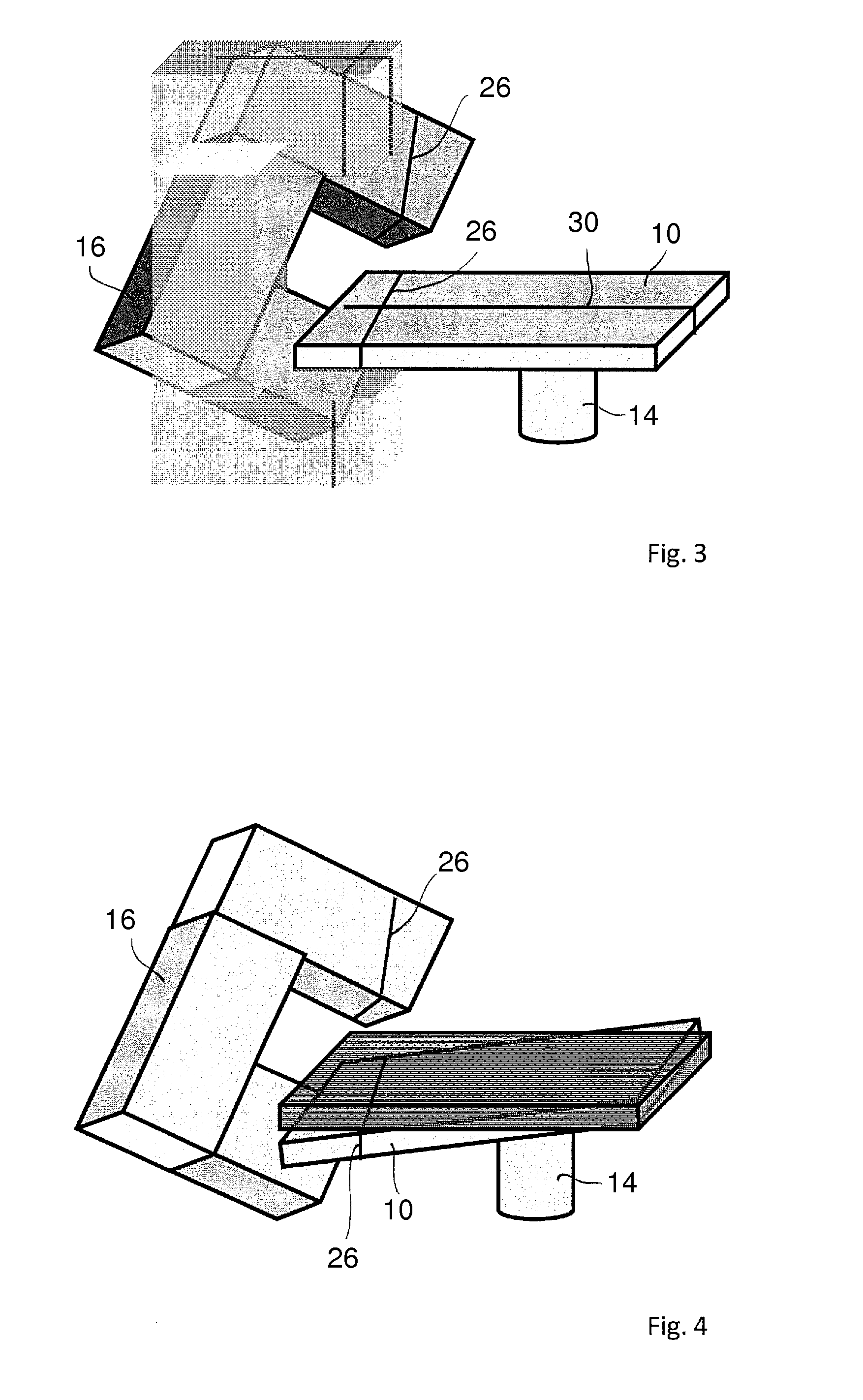System and method for determining the position of objects in a radiation room for radiation therapy
a radiation therapy and object technology, applied in the direction of diagnostics, therapy, instruments, etc., can solve the problems of insufficient and comprehensive monitoring of the position of the patient body, structural complex devices therein, and de 297 24 767 u1 devices also structural complex, etc., to achieve short treatment time, avoid additional radiation load, and the effect of high accuracy
- Summary
- Abstract
- Description
- Claims
- Application Information
AI Technical Summary
Problems solved by technology
Method used
Image
Examples
Embodiment Construction
[0018]The system according to one implementation of the invention can comprise a radiation device and a patient table. A radiation device for cancer therapy of a patient is generally located in a radiation room. The radiation device may be a linear accelerator (LINAC), the head (gantry) of which rotates around the patient table supporting a patient during radiation treatment. According to this implementation, it is suggested that the above-explained room lasers permanently arranged in the radiation room for positioning a patient for radiation be used for further purposes, namely for the position determination of a patient and, if necessary, additional objects in the radiation room. Conventional laser triangulation may be used. At least one laser line, and preferably several laser lines, are at least projected at the patient and at least one laser line, and preferably all laser lines, are recorded by one or more high-resolution cameras. The system is thus structurally simplified thro...
PUM
 Login to View More
Login to View More Abstract
Description
Claims
Application Information
 Login to View More
Login to View More - R&D
- Intellectual Property
- Life Sciences
- Materials
- Tech Scout
- Unparalleled Data Quality
- Higher Quality Content
- 60% Fewer Hallucinations
Browse by: Latest US Patents, China's latest patents, Technical Efficacy Thesaurus, Application Domain, Technology Topic, Popular Technical Reports.
© 2025 PatSnap. All rights reserved.Legal|Privacy policy|Modern Slavery Act Transparency Statement|Sitemap|About US| Contact US: help@patsnap.com



